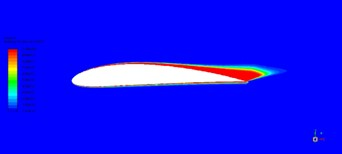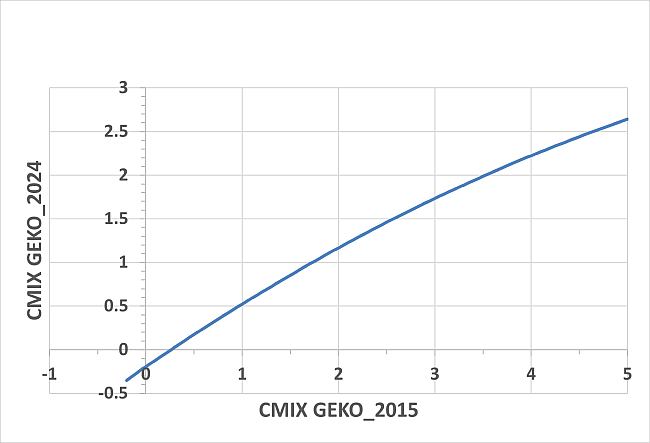The original version of the GEKO model (GEKO-2015) has shown some conceptual weaknesses which have motivated a moderate re-formulation (GEKO-2024) in order to improve tuning capabilities. The main issue is the need to separate the tuning coefficients of the model between coefficients affecting boundary layers and coefficients affecting frees shear flows.
The improved GEKO-2024 model is available after enabling beta feature access, as described in Introduction.
A drop-down menu under GEKO Options → Version is available to choose the GEKO model version on the Viscous Model dialog box as shown in Figure 10.1: Viscous Model Panel with GEKO-2024 Version Enabled:
The GEKO model version can also be accessed using the following text command:
/define/models/viscous/geko-options/version
The default version is 2015 and the improved model version is
2024.
Like in the GEKO-2015 model, the GEKO-2024 version of the model features six modifiable
coefficients. Two of these coefficients are mostly designed for boundary layers (,
), whereas two are intended for free shear flows (
,
). The other two coefficients (
,
) are relevant for the entire flow.
The main shortcoming of the GEKO-2015 model was that the effect of the coefficient was ‘global’ meaning it was not restricted to the near wall
zone. Changing
resulted not only in the desired effect on the boundary layer, but also in a
modification of spreading rates for free shear flows. Since this is undesirable, the coefficient
in GEKO-2015 needed to be automatically adjusted to compensate for this
effect. This interaction made the calibration of the model for complex flows challenging.
The GEKO-2015 model already used a blending function, , that distinguishes between near wall and free shear regions. The
function is shown for an airfoil in Figure 10.2: Blending Function
for an Airfoil.
However, in GEKO-2015, the coefficient
was not confined to regions of
=1, but acted globally. This is changed in GEKO-2024. The GEKO-2024 version
avoids this interaction and limits the effect of
and
to the near wall layer (
=1) and the effect of
and
to the outer flow (
=0). Furthermore, the coefficient
was made independent of
further simplifying independent optimizations.
See the following notes on model calibration. More details can be found in [3].
(
=1)
Affects boundary layers (
=1).
Main parameter for adjusting separation prediction for boundary layers.
Increasing
reduces eddy-viscosity leading to more sensitivity to adverse pressure gradients and earlier/larger separations for boundary layers.
(
=1)
Affects the inner part of wall boundary layers (
=1)
Increasing
leads to higher wall shear stress and wall heat transfer rates in non-equilibrium flows.
Increasing
reduces eddy-viscosity leading to more sensitivity to adverse pressure gradients and earlier/larger separations for boundary layers.
Effect on non-generic flows (for example, vortices) moderate but not systematically tested.
Default
=0.5 suitable for most cases.
(
=0)
Affects only free shear flows (
=0).
Increasing
increases spreading rates of free shear flows.
(
=0)
Affects only free shear flows (
=0).
Affects mostly jet flows. Increasing
while
is active, decreases spreading rate for jets.
Allows to adjust spreading rate of jet flows while maintaining spreading rate of mixing layer.
Default
=1 suitable for most cases.
(full domain)
Non-linear stress-strain term to account for secondary flows in corners (for example, wing-body junctions).
Affects all flows.
(full domain)
An existing model for curvature correction, which can be combined with the GEKO model.
Affects all flows.
As a result of these changes, values for which have been calibrated for the GEKO-2015 model are no longer suitable for
the GEKO-2024 model. A one-to-one transformation between the two versions is not possible but an
effort was made to achieve similar results for the tri-angular cylinder (see [3]) in order to find an approximate correlation between both
versions. The approximate correlation is given by Equation 10–1 and
Figure 10.3: Approximate Correlation between
values of GEKO-2015 and GEKO-2024 Models.
(10–1) |





